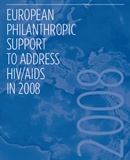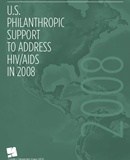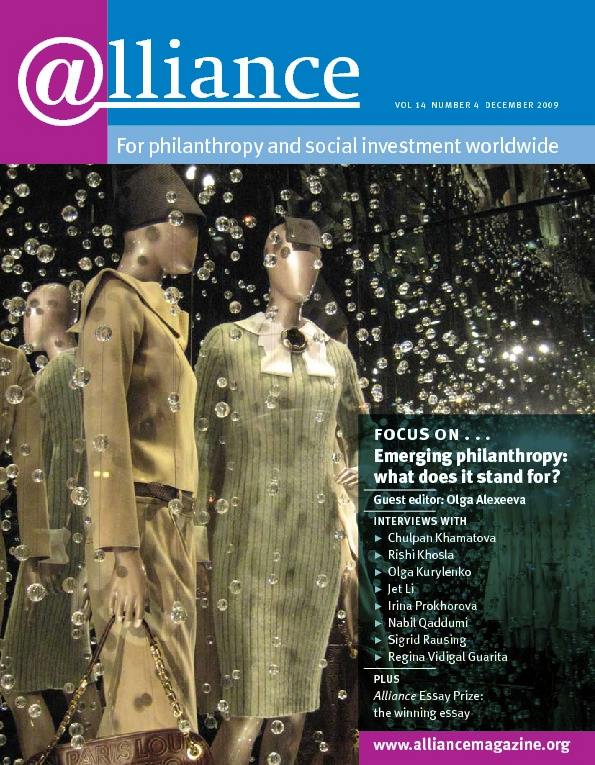 According to reports released last month, total HIV/AIDS-related philanthropic funding by European funders amounted to €91 million ($134 million) in 2008, while the corresponding figure for US-based funders was $618 million. The European figure for 2008 was slightly lower than the 2007 amount (€1.7 million or 1 per cent), and down by €5 million (7 per cent) since 2006.
According to reports released last month, total HIV/AIDS-related philanthropic funding by European funders amounted to €91 million ($134 million) in 2008, while the corresponding figure for US-based funders was $618 million. The European figure for 2008 was slightly lower than the 2007 amount (€1.7 million or 1 per cent), and down by €5 million (7 per cent) since 2006.
In the US, funding from philanthropy for HIV/AIDS increased from 2007 to 2008 by approximately $63 million (11 per cent), but only because of an increase in funding by the Bill &  Melinda Gates Foundation. Without this, the figures would have shown a decrease over the 2006-08 period of around 3 per cent.
Melinda Gates Foundation. Without this, the figures would have shown a decrease over the 2006-08 period of around 3 per cent.
The aim of the two reports, published by the European HIV/AIDS Funders Group (EFG) and the US-based Funders Concerned About AIDS (FCAA), is to facilitate greater coordination and transparency among funders, assist funders in identifying ways to enhance the effectiveness of their funding, and encourage expanded philanthropic support for HIV/AIDS work.
All is not doom and gloom, however. Projections by European-based funders for 2009, cited in the EFG report, suggest that HIV/AIDS philanthropy funding levels may rise, with 60 per cent of funders anticipating increases. However, 42 per cent of US funders forecast decreases for 2009, with only 15 per cent expecting their funding to rise this year.
Both organizations are extremely concerned about this general trend because the needs of individuals and communities affected by HIV/AIDS continue to grow. The economic downturn has exacerbated the situation as it disproportionately affects the poorer countries that are home to the vast majority of the tens of millions of people affected by HIV. Current economic and epidemiological realities demand greater resources for HIV/AIDS and more effective use of those resources.
In both Europe and the US, HIV/AIDS-related philanthropic funding remained concentrated among a relatively small number of funders in 2008. In Europe, the top ten funders (ranked by expenditure) accounted for 84 per cent of all HIV/AIDS-related expenditures, while in the US the figure was 82 per cent.
The majority of funding by both European and US foundations philanthropies was directed to addressing the HIV/AIDS epidemic outside of these regions (63 per cent of all European HIV/AIDS philanthropic expenditures and 84 per cent of US expenditures).
‘Private philanthropic funders have a unique opportunity to fund populations and issues that governments and other donors are reluctant to prioritize …’ says John Barnes, interim executive director of FCAA. ‘These are the programmes that are more vulnerable to public budget cuts because they have less political support.’
‘Funders should be creative and committed in their efforts to increase HIV/AIDS funding and to sharpen the focus and impact of their existing HIV/AIDS programmes,’ says Astrid Bonfield, executive director of The Diana, Princess of Wales Memorial Fund and EFG Chair.
EFG is convening an HIV/AIDS funders’ meeting in Brussels on 4 and 5 February 2010. The theme will be ‘Filling the Gaps or Shaping the Agenda? Mobilising Philanthropic Leadership for HIV/AIDS’.
For more information or to download the reports
http://www.hivaidsfunders.org
http://www.fcaaids.org
For more information about the funders’ meeting, contact Makfire Alija, EFG network coordinator, at makfire.alija@hivaidsfunders.org






Comments (0)